How Clark Nexsen’s Design Combustion Chamber Ignites Innovation
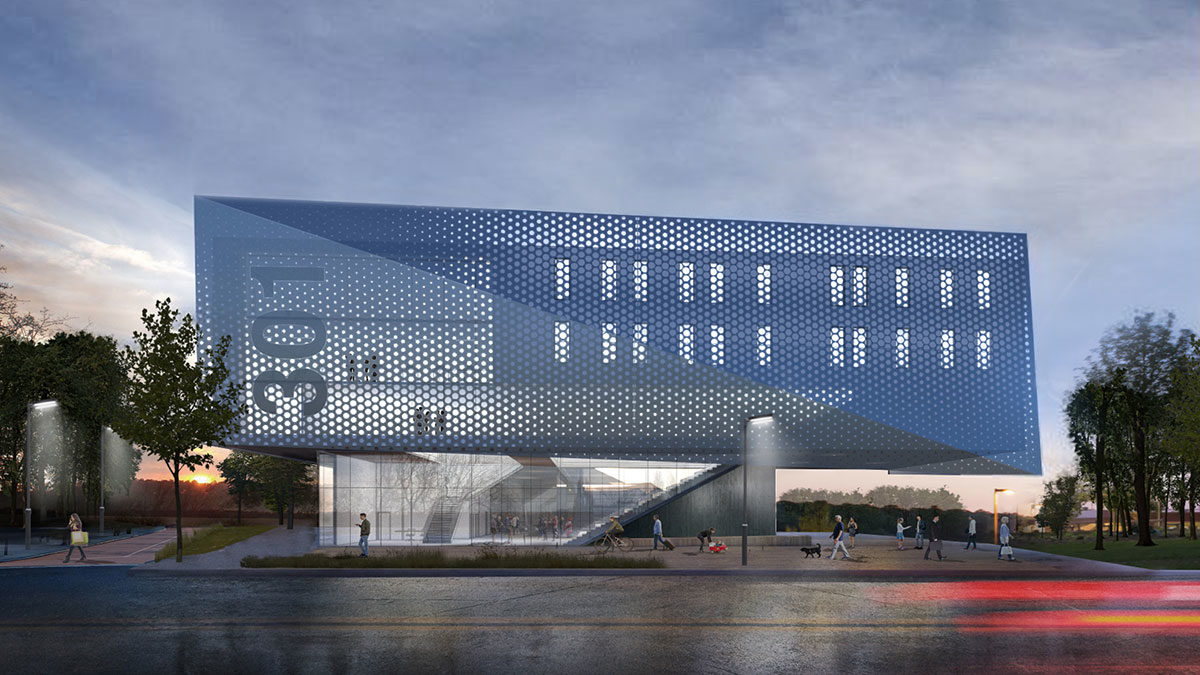 As its name indicates, the “Combustion Chamber” is a vehicle to fuel experimentation and discovery within the professional realm of architectural design. Led by Albert McDonald, AIA, the chamber seeks to propagate curiosity in the interest of sustained professional growth, driving better outcomes for clients and fostering an engaged design culture within our firm.
As its name indicates, the “Combustion Chamber” is a vehicle to fuel experimentation and discovery within the professional realm of architectural design. Led by Albert McDonald, AIA, the chamber seeks to propagate curiosity in the interest of sustained professional growth, driving better outcomes for clients and fostering an engaged design culture within our firm.
To achieve these goals, the Combustion Chamber has leveraged design competitions as a springboard for innovation. Building on Clark Nexsen’s long history of design competition participation, the group has now formally participated in 10 competitions and received numerous accolades, including winning submissions for the Urban Housing Competition and the AIA Activate NC GoRaleigh Bus Shelter Prototype Competition. Most recently, the Combustion Chamber is seeing its efforts take new shape by informing design decisions and evolving into built projects.
Combustion Chamber...it’s a focused study and a search for unexplored territory. It’s a place to stoke an idea or methodology while bringing that new tool back around to practice in the office. For me, Combustion Chamber represents collaborative studio learning through experimentation.
– Jordan Gray, Architectural Intern, Clark Nexsen
Most Memorable Competition Design Solutions
When asked which competitions stand out most in his mind, Albert quickly responded with the MINT submission to the AIA NC Urban Housing Competition and the GoRaleigh Bus Shelter Prototype. In each case, Albert felt the team challenged themselves and each other intellectually to go beyond the design brief and develop a solution with meaningful value to its community.
The MINT entry compelled us to develop a program that went beyond the boundaries of the design brief. The team approached this essentially as a research project, studying the city, site, and the socioeconomic makeup of the surrounding area with the goal of creating an elegant, valuable architectural solution that would serve as a catalyst for growth and development.
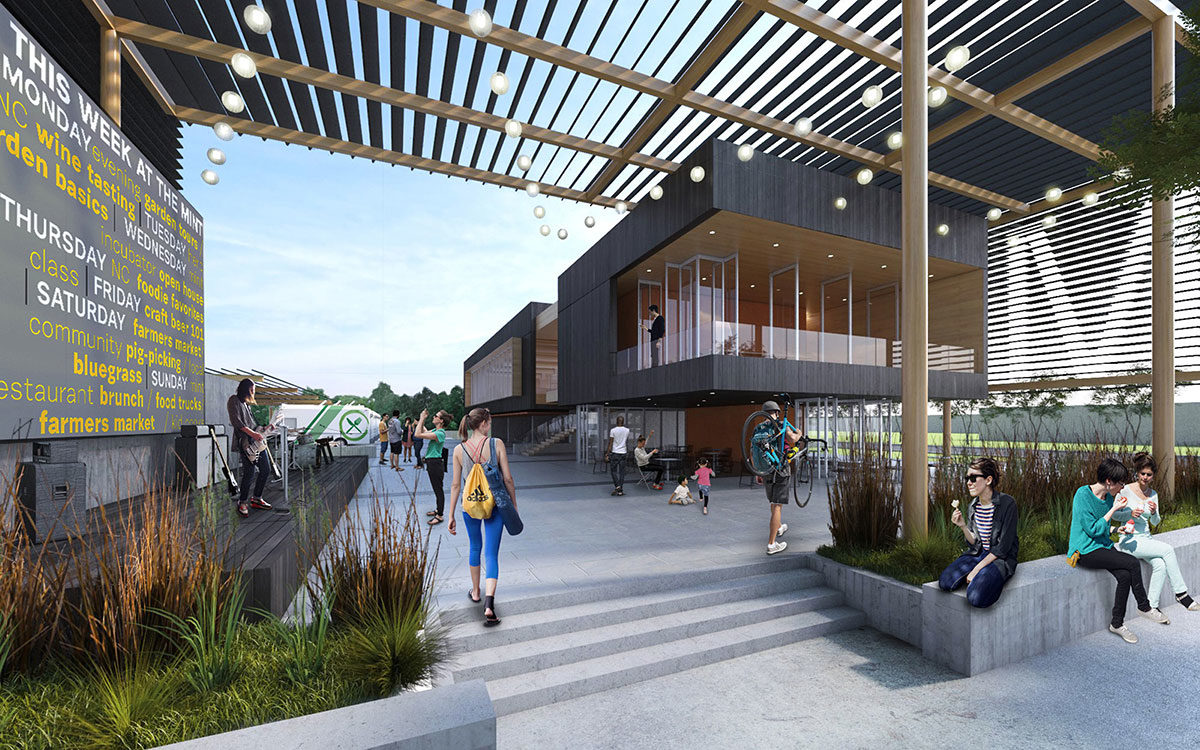
Architect Albert McDonald describes the MINT entry for the AIA NC Urban Housing Competition as one that “illustrates how development can be meaningful by being specific to its place and culture.”
The Bus Shelter Prototype, which will ultimately become a built project serving the Raleigh community, challenged the team to understand architecture in yet another way: examining how these facilities function as parts of a whole, as a network, within the operation of public transit. The team explored fabrication techniques, constructability, parameters, and code restrictions while pursuing the development of “functional art.” Appropriately, the first two installations of the bus shelter will be located at the North Carolina Museum of Art.
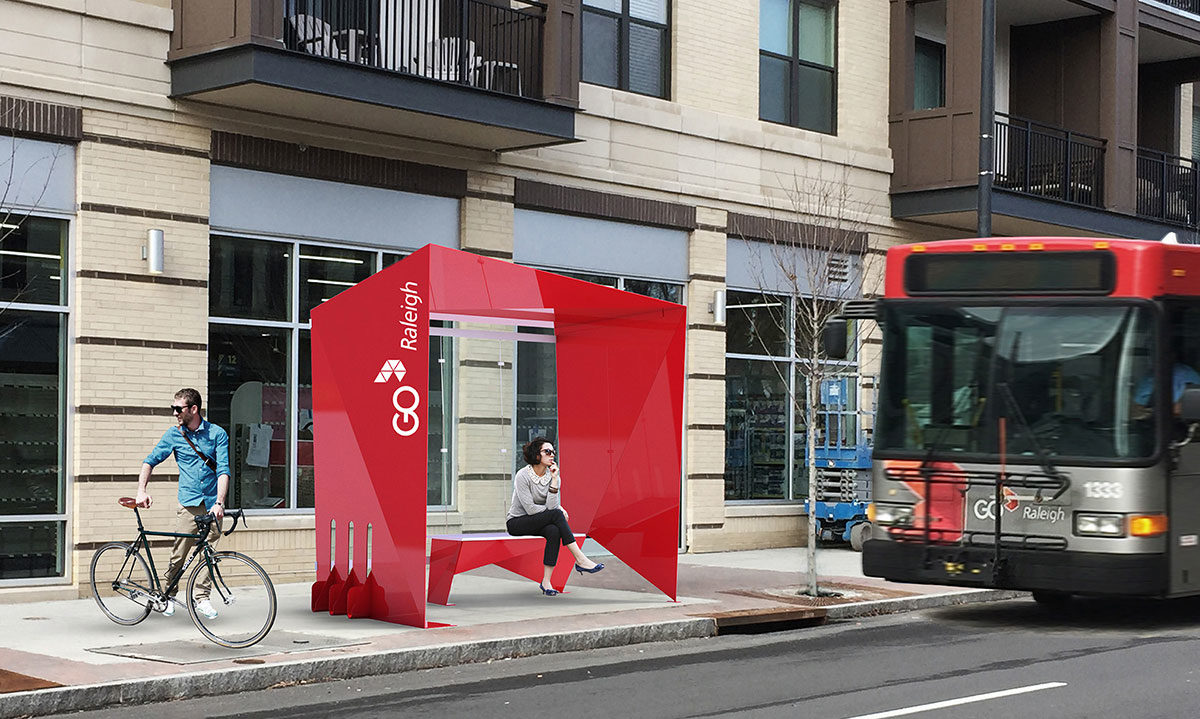
Centered on goals to create a bus shelter that is visible, branded, and distinguished in the landscape, the resulting concept supports the transit system and reinforces a sense of place and community.
Impacting the Built Environment
From its inception, the Combustion Chamber has focused on the crossover of innovative ideas from the chamber to the firm’s daily practice with the goal to drive value for our clients, our industry, and the world. Its current metamorphosis into a professional and community ideation network for hypothesizing and testing solutions has long been the group’s vision.
The inaugural Clark Nexsen Combustion Chamber Ideas Competition, initiated in 2018 through relationships between colleagues and Duke University alumni, challenged entrants to reconsider the future of international graduate student housing on Duke’s Central Campus. Four powerful and varied solutions, developed by more than 20 employees, were then juried by external experts including architects and facilities representatives from top institutions such as Harvard University, Virginia Tech, and The University of Chicago. It is anticipated that the resulting project will be open to Duke’s international graduate students in the fall of 2020.
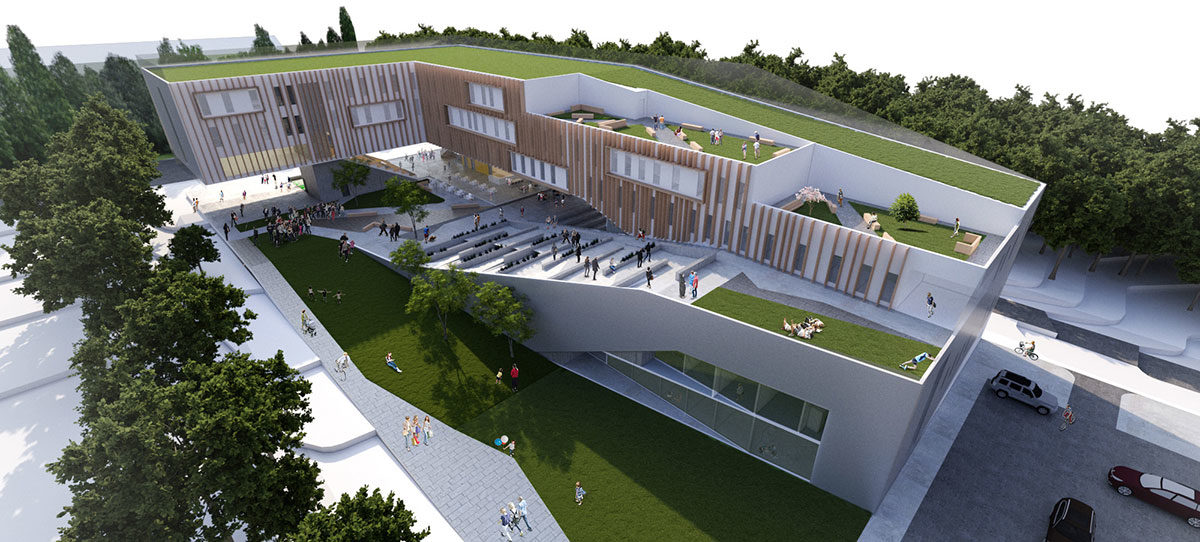
The Park/301 submission (here and top) draws inspiration from NYC’s famed Central Park, deviating from the traditional quad to create an inviting central outdoor space that celebrates learning, interaction, and creativity for the broader campus community.
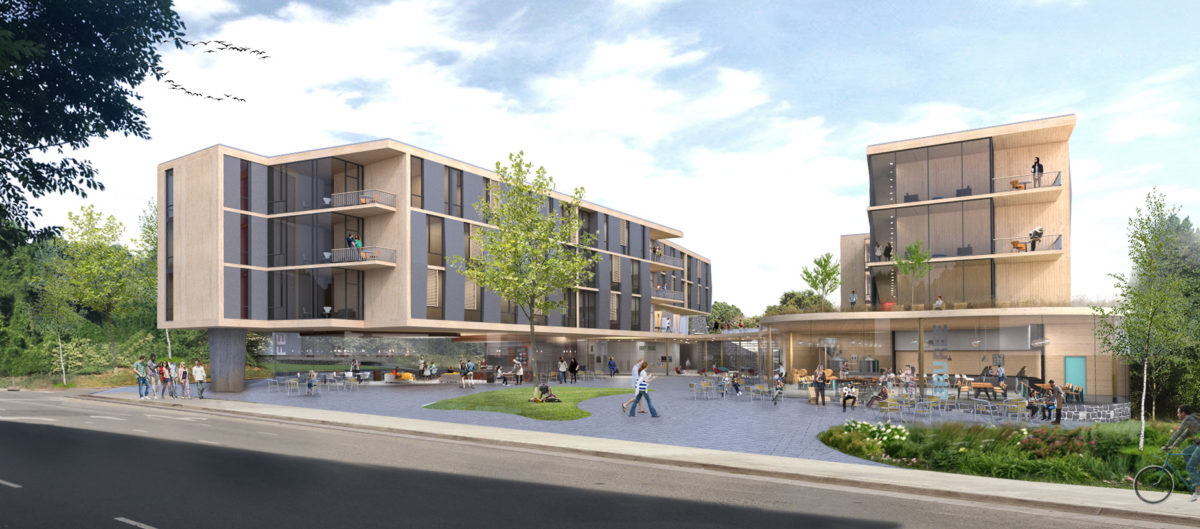
The Swift House submission creates a 21st century housing model that acts as a catalyst for intercampus synergies. Seeking to transform the experience of Duke’s central campus, a public plaza, retail components, and free-flowing main entry level activate Swift House as a destination for residents and the public.
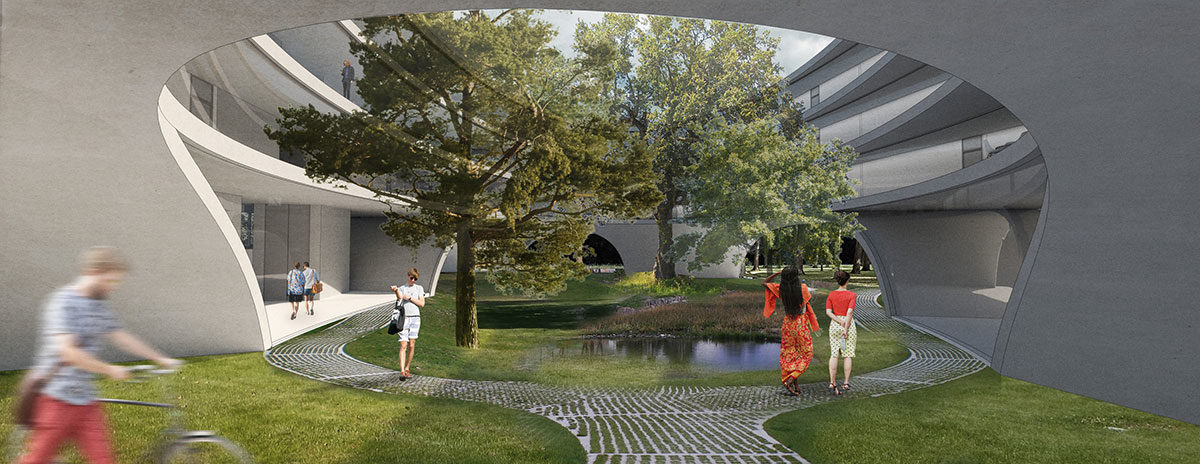
The Woods submission takes advantage of the site’s proximity to an underutilized wooded area to enhance the connection to the natural world. The design solution is heavily focused on sustainability and indoor-outdoor connectivity.
Fostering Collaboration Across Disciplines and Practice Areas
While the nature of design competition is inherently architectural, the Combustion Chamber is working to expand its collaborative relationships across A/E disciplines and involve external experts who may offer unique insights. For example, in the coming months, the chamber is participating in a competition to reimagine the 21st century urban high school, exploring how these facilities might serve as multipurpose community centers as urban constraints continue to grow. This entry will bring together designers from the K-12 practice, external experts, and other disciplines to develop a groundbreaking, dynamic solution to the challenges facing schools and cities.
In another example, the firm’s recent entry to the London Nursery School Ideas Competition is the result of a collaborative effort between architecture and our waterfront engineering director, Dave Pryor. Informed by Dave’s expertise and insights regarding water edge restoration and management, the team developed a solution that emphasizes the natural environment by leveraging the site’s location along a significant tributary to the Thames River. Urban environments like London are experiencing a growing disconnect between people and nature, and the team saw an opportunity to reintroduce nature in this early education setting. As a result, children experience firsthand the flora and fauna and the daily cycles of tidal flow, broadening their understanding of natural systems that would otherwise be heavily managed or even eradicated in an urban setting.
As the Combustion Chamber and its role in design efforts evolves, Albert continues to view design competitions as a testing ground for his own capabilities and as a means to provide young designers with opportunities to experiment. One of the things that distinguishes the competition experience, he notes, is the rapid and intense evaluation of ideas driven by the dual impact of time and pressure.
Learn more about working with us
xxx

Albert McDonald, AIA, is an associate principal and recognized design leader driven by his passion for architecture and commitment to the profession. His design portfolio has been recognized regionally, nationally, and internationally through his contributions on a wide range of projects and design competitions. Albert is the president-elect for the AIA Triangle Chapter and was honored with the 2018 Emerging Professional Award from AIA North Carolina. To speak with Albert or learn more about the Combustion Chamber, please call 919.828.1876 or email amcdonald@clarknexsen.com.
